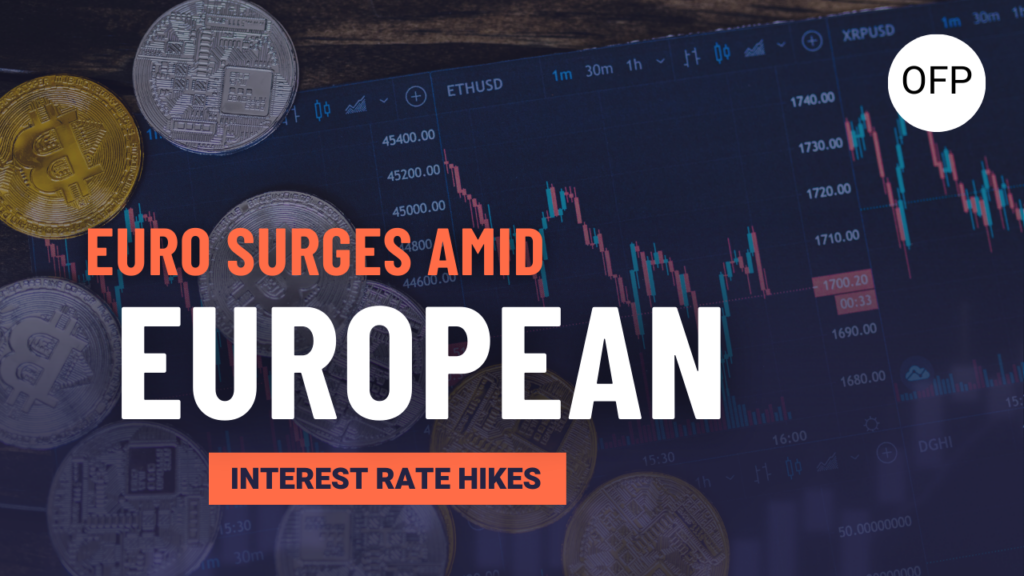Table of Contents
The euro has been on a steady climb, gaining strength against major global currencies as investors anticipate further interest rate hikes from the European Central Bank (ECB). This upward trend reflects growing confidence in the eurozone’s economic prospects, with the currency extending its gains for the second consecutive session against the US dollar. Meanwhile, the dollar has been losing ground, particularly after the Federal Reserve hinted at a potential pause in its policy tightening—a signal that the current cycle of interest rate hikes might be nearing its end. As the market digests these developments, all eyes are now on upcoming data regarding US banking lending levels, which could further influence currency movements.
EUR/USD: A Closer Look at the Pair’s Performance
The EUR/USD pair has been showing resilience, rising by 0.25% to reach 1.1050 in recent trading. This comes after hitting a session low of 1.1014, following a modest 0.1% gain in the previous session, which was driven by ongoing banking pressures in the United States. The euro’s strength against the dollar underscores the contrasting monetary policy outlooks between the ECB and the Federal Reserve, with the former appearing more committed to further tightening.
ECB’s Stance: Preparing for More Rate Hikes
At the heart of the euro’s recent strength is the ECB’s clear stance on inflation and interest rates. ECB President Christine Lagarde, speaking at a press conference following the latest ECB meeting, emphasized that inflation in the eurozone remains stubbornly high. To combat this, the ECB raised interest rates by 25 basis points, bringing the key rate to 3.75%—the highest level since 2008. Lagarde made it clear that the ECB is not done yet, indicating that there is still “more ground to cover” when it comes to rate hikes.
Interestingly, while the decision to raise rates by 25 basis points was unanimous, Lagarde revealed that some members of the ECB’s Governing Council had even advocated for a more aggressive 0.5% rate hike this month. This highlights the determination within the ECB to bring inflation under control, even if it means more significant rate increases in the near future.
Market Expectations: More Rate Hikes on the Horizon
With inflation still a pressing concern, markets are now pricing in at least two more 0.25% rate hikes from the ECB, likely to come in June and July. These anticipated hikes are seen as necessary steps to curb persistent inflationary pressures in the eurozone. Deutsche Bank, one of Europe’s leading financial institutions, has reaffirmed its outlook for European interest rates, expecting them to peak at 4.25% by the end of the summer. This forecast aligns with the ECB’s current trajectory and suggests that the euro could continue to benefit from a widening interest rate differential with the US dollar.
The Dollar’s Decline: Impact of Fed’s Dovish Shift
On the other side of the Atlantic, the US dollar has been losing steam, partly due to the Federal Reserve’s recent signals that it may be approaching the end of its current rate hike cycle. The dollar index, which measures the greenback against a basket of major currencies, fell by 0.2% on Monday, marking its second consecutive session of losses. This decline reflects growing investor sentiment that the Fed might pause its aggressive monetary tightening, especially as concerns about the broader economic impact of higher rates begin to mount.
The Fed’s dovish shift comes at a time of heightened uncertainty in the US, particularly around the ongoing debt ceiling negotiations in Congress. Investors are closely watching these discussions, as failure to reach a compromise could lead to significant financial instability. US Treasury Secretary Janet Yellen has already warned that the government could run out of money to pay its debts as early as June 1st if a deal is not reached. This looming crisis adds another layer of complexity to the dollar’s outlook, as any negative developments could further weaken the currency.
What’s Next for Traders?
As the euro continues to gain momentum, and the dollar faces mounting pressures, forex traders are presented with both opportunities and risks. The contrasting monetary policies of the ECB and the Federal Reserve are likely to remain key drivers of currency movements in the near term. For traders, understanding these dynamics and staying informed about central bank decisions, economic data, and geopolitical developments is crucial to navigating the forex market successfully.
Join OFP and gain access to cutting-edge trading tools that can help you make the most of these market movements. Whether you’re looking to capitalize on the euro’s strength or hedge against potential dollar declines, OFP’s platform provides the resources you need to elevate your trading game. With no evaluations, no assessments, and no delays, you can focus on what really matters—trading and growing your portfolio.

